Day :
Sessions:
Nursing Research | Scope of Nursing Research | Purposes of Nursing Research | Nursing Research – Challenges and Opportunities | Current Trend in Nursing Research | Nursing Process | Advanced Practice Nurse | Role of Advanced Practice Nurse | Nursing Theory | Nursing Models | Qualitative Nursing Research | Mixed Method Nursing Research | Registered Nurse | Nurse Practitioners
Session Introduction
Dr. Marcia Lysaght & Dr. Marlly Cadavid
Miami Veterans Affairs Healthcare System, USA
Title: Preparing the Novice Nurse to Care for Veterans Through a Nurse Residency Program

Biography:
Dr. Marica Lysaght is the Associate Director of Patient Care and the Chief Nurse Executive at the Veterans Affairs Miami Healthcare system. She holds a Baccalaureate Degree in Nursing from California State University Fullerton, a Master’s Degree in Nursing Administration from University of California Los Angeles, and a Doctorate in Executive Health System Leadership from the University of San Francisco. She is a Nursing Faculty at the Nichole Wertheim College of Health Science at Florida International University is on the Advisory Board for academic institutions and has held numerous leadership positions across the health care continuum for twenty-fiveyears.
Dr. Marlly Cadavid is a proud US Army Veteran having entered the health field as an Army combat medic. Currently, she is the Director of the VA Nursing Academic Partnership program, the Post Baccalaureate Nurse Residency Program, Transition to Practice Residency and other entry to practice programs at the Miami Veterans Affairs Miami Healthcare System. She brings academic, operations, and staff & leadership development experience in healthcare. She is a Nursing Faculty at Nichole Wertheim College of Health Science at Florida International University. She holds a Master’s Degree in Business Administration and a PhD in Nursing Leadership from Barry University.
Abstract:
The Veterans Health Administration (VHA) is the largest integrated health care system in the United States, providing care at 1,243 health care facilities, including 172 VA Medical Centers and 1,062 outpatient sites of care of varying complexity (VHA outpatient clinics) to over 9 million Veterans enrolled in the VA health care program.. At a local VA facility, 38% of registered nurses were retirement eligible, leading to a potential risk of a nurse staffing crisis. To mitigate the risk, an RN residency program was implemented with a goal of ensuring a pipeline of competent nurses to fill immediate and future nursing vacancies.
Nurse Residency Programs (NRP) aim to provide the novice nurse transition to autonomous and competent clinical practice. Newly registered nurses (NRN) are often overwhelmed with the role demands and perceived lack of support to help guide them through the difficult transition in a highly complex healthcare settings. A veteran-centric NRP that is evidence based and well-structured, has been demonstrated to be a viable, cost effective solution, to addressing the challenges NRNs face as well as mitigating the high rate of turnover.
The NRP is modeled after the National Council of State Boards of Nursing and accredited by Commission on Collegiate Nursing Education (CCNE) that includes didactic, experiential, and leadership learning opportunities, clinical rotations throughout the continuum of care incorporating interprofessional collaboration. CCNE accreditation was received through rigorous site visit in which the NRP must demonstrate multi-tiered evaluation plan that meets the four CCNE standards for entry to practice.
Vickie Hughes
Johns Hopkins School of Nursing, USA
Title: Nursing Leadership Development within the Irish Context

Biography:
Vickie Hughes has serviced in various clinical, educational, and leadership positions over the past 31 years. She retired as a colonel after 27 years of service within the United States Air Force. Her mental health clinical background includes working with children, adolescents, adults, and families in inpatient, partial hospitalization, and outpatient programs. Dr. Hughes obtained the Adult Psychiatric/Mental Health CNS certification in 1996 and was recognized as a Certified Alcohol and Drug Abuse Counselor in 1998. She earned a doctor of nursing science degree from Louisiana State University Health Science Center, a master’s degree in nursing from the University of Alabama at Birmingham, a master’s degree in counseling and human development from Troy State University, and a bachelor’s degree in nursing from the Medical University of South Carolina. She has nine years of teaching and course development experience to include serving as a dean for an Associate Degree Health Science program. In addition, she has served in leadership positions as a director of nursing and a clinic CEO.
Abstract:
Purpose There is limited literature published related to nursing leadership development within small island countries. This project, Irish Nurse Leadership Development, is part of a larger study examining cultural factors that influence leadership development within four small island countries in Europe. The development of nursing leadership in Ireland is on-going and still found today. This study examined phenomenal nurse leaders who found ways to make numerous advancements in nursing as a profession. The purpose of this study was to understand nurse leadership development within the Irish context.
Method A focused ethnographical research design was used in interviewing four Irish nurses as they have evolved and assumed clinical, administrative, and academic leadership roles.
Results The major themes from this study included: critical feminist theory, leadership strategies, political acumen, and cultural impact.
Conclusion Irish nurse leaders demonstrated strategies to overcome cultural, political, and socio-economic barriers to influence policy in developing their nursing practice and leadership role while forging a path toward professional development and advancement.
Gina Rhodes
University of Phoenix, USA
Title: Nurses strategies for drowsy driving prevention: A qualitative, exploratory multiple case study

Biography:
Gina Rhodes completed her doctorate in Health Administration at the University of Phoenix. Gina has an extensive background in health care that spans over 30 years from administrative (Executive Assistant to Director of Health Care Marketing and Community Service) to clinical (Advanced Clinical Technician in Trauma, Intensive Care, and Psychiatric Units). Gina holds a BS degree in Psychology from Georgia State University, a MS degree in Health Administration from Strayer University, and an MBA from Everest University. The basis of Gina’s desire to attain a doctoral degree in Health Administration was to make an impact on leadership and their teams in professional service organizations.
Abstract:
Worldwide each year, drowsy driving causes thousands of deaths and injuries. The purpose of this qualitative, exploratory multiple case study was to explore the strategies nurses implemented to lessen the possibility of driving while drowsy after working nights in hospitals, nursing homes, and home health facilities. Twelve nurses participated by answering 11 demographic questions and 11 semi-structured questions in telephone interviews to identify similarities and patterns relating to driving challenges after night-shift work and strategies for sleepy driving prevention. The semi-structured interviews included 11 scripted questions, in the same order, without conversation. Three major themes emerged from the data analysis. Theme 1: Fatigue is a significant challenge that impedes driving home safely. Theme 2: Multiple strategies are helpful, but they do not replace the body’s need for sleep. Theme 3: Night nurses experience significant additional stressors relating to caring for family, school, and multiple jobs. Health care administrators may use the results to gain insight for training nurses for the night shift to prevent drowsy driving injuries and fatalities. The results of the study may offer a platform for further investigation that may uncover best-practice strategies for health care administrators staffing other types of 24-hour medical care facilities.

Biography:
Avisa Asemi has completed her PhD in 2015 from Florida Atlantic University in
Complex System and Brain Sciences and her master degree was from Georgetown University in double major biochemistry and molecular biology.She is an operational IVF lab director and senior embryologist in University Miami Fertility Department.She used to work in BocaFertility, Boca Raton and Shady Grove Fertility Center, Maryland,USA as an operational lab director and senior embryologist. She has worked in Canada and Iran as embryologist. She has published 2 papers in reputed journals.
Abstract:
In vitro fertilization, popularly referred to as IVF, has attracted the attention of the public since its introduction in 1978. Today assisted reproductive technology (ART) is available throughout most of the civilized world, and the practice is largely different from that used during the early days.
The birth of Louise Brown in 1978 was the culmination of decades of scientific research in reproductive medicine. Since then, an abundance of breakthroughs in both clinical medicine and basic science have allowed increasing numbers of infertile couples the chance to have a baby. I started working in IVf lab 20 years ago.Since then, I have worked in several laboratories in three different countries as an operational Lab director and senior embryologists while the innovation and refinements in technology took placed, which led me to experience the different ways of running a successful IVF lab. By working in very different labs: the most busiest one with 500 cases annually, private with 200 case and academic IVF lab, I learnt one important aspect, the success is in keeping the procedures for each patient simple and straight forward. Furthermore, consistency in each process for each patient is a key to success. Efficiency in IVF lab highly depends on advanced technologies and embryologists expertise, therefore, in this perspective keeping a records of procedures, QC, QA, QM statistics in very simple way retain IVF lab in their optimum performance. This simplicity and consistency help a lab director to see the issues clearly and track back the problem more effectively which may
effect the results.
Renate Elizabeth Gibbs
Camosun College, Canada
Title: Motivating and Deterring Factors that Influence Canadian Student Nurses’ Decisions to Study Abroad

Biography:
Renate Gibbs, RN, BSN, MA, DTN has served as a faculty member of the Nursing Program at Camosun College. Since 2004, she participated in International Study Abroad programs and has maintained an interest to develop student’s learning experiences and their cultural competence in locations such as Tonga, India, the Philippines and New Zealand. Professor Gibbs has been recognized for excellence in education in a Baccalaureate Nursing Program, she has served for 29 years as an educator and in leadership roles such as Curriculum Chair and Program Leader as well as in research projects. Her work in research reflects her interest in hermeneutic studies and interpretive description research and with her colleagues she has contributed to conference presentations as well as publishing their findings.
Abstract:
Study abroad opportunities in many Canadian Nursing programs have become increasingly popular in the past decade. Schools of nursing are tasked with making nursing education culturally relevant in a global society and student learning can be enhanced with this expanded curriculum focus in addressing global health content, cultural competence in a variety of overseas placements. Camosun College’s Nursing Program (Victoria, BC, Canada) has offered international Study Abroad experiences for students in the Baccalaureate of Nursing Program since 2004. Study abroad opportunities offer an experiential learning opportunity to expand a student’s personal and professional development. International placements have included both developed and developing countries and require adequate numbers of student participants to support these optional programs. Students frequently demonstrate strong interest in study abroad programs as nursing programs develop their links with international settings, however a variety of factors may deter the student’s participation from this optional experience.
In order to build on the capacity with individual study abroad programs an exploratory study was conducted in 2016 with nursing students and involved an interpretive descriptive research study. This multi-faceted study sought to address four study objectives with nursing students (n = 21) participating in two programs; New Zealand and in the Philippines. A combination of data collection techniques included pre and post study abroad focus groups (n = 4), critical reflections (n = 24), a fluid survey (n = 12) and a structured questionnaire (n = 60). Rich data emerged to address the issues and factors that influence Canadian nursing student’s motivation and challenges as they considered study abroad opportunities. It is anticipated that the presentation of these research findings, coupled with recommendations for best practice to consider study abroad programs’ motivating and deterring factors which can influence students’ decisions to participate will help inform the discussion on the merits and challenges of Study Abroad programs.
Suzanne Bench
London South Bank University, UK
Title: Orthopaedic nurses’ engagement in clinical research; an exploration of ideas, facilitators and challenges

Biography:
Dr. Bench was awarded her PhD in 2014 from King’s College, London. She holds a joint appointment as an Associate Professor of nursing between London South Bank University and the Royal National Orthopaedic Hospital, with a remit to develop the reserach capability and capacity of nurses as part of her deputy director role. As an experienced intensive care nurse, ahse sits on the executive board for the British Association of Critical Care Nurses and is Deputy Chair of the UK critical care nursing alliance. She has published more than 20 papers and is an associate editor for an international journal.
Abstract:
Research-active healthcare organisations provide better quality care and improved clinical outcomes. Clinical staff are in an excellent position to identify research questions that matter to patients and families, but previous international studies have identified individual and organisational barriers to nurses’ research utilisation, with a paucity of data related to nurses’ engagement in research.
In 2017, our hospital created a research leadership group of directors, each with responsibility for a specific professional discipline. The aim of this qualittaive study was to explore nurses’ views regarding the research priorities for orthopaedic care and the perceived barriers and facilitators associated with nurses’ engagement in the research process. All nurses (n=373) working at the hospital were invited to participate. 75 nurses (20%) completed a questionnaire and participated in one of 14 audio recorded focus group discussions. Qualitative data underwent thematic analysis and descriptive statistics were used to present questionnaire responses.
Three key themes were identified: Other people do it; research ideas; barriers/facilitators. Although some people acknowledged its importance, research activity was not seen as part of the professional role and participants struggled to identify their own ideas. Key barriers centred around culture (priorities, motivation, support and empowerment), resources (time, competence, knowledge and confidence) and perceptions of research as scary and difficult. Key facilitators focused on resources and effective leadership.
Findings add to the body of evidence supporting the need for effective nursing research leadership. Data have informed a local nursing research strategy, which requires effective collaboration with the wider multi-disciplinary team for success.
Lynette (Lynne) Staff & Meredith Nash
University of Tasmania, Australia
Title: Brain death during pregnancy and prolonged corporeal support of the body: a critical discussion

Biography:
Lynne has been a midwife for 35 years and has worked in the public and private sectors across all areas of midwifery. She has taught midwifery in both hospital and tertiary settings and is currently a lecturer in midwifery at the University of Tasmania. A PhD candidate, Lynne is particularly interested in history, technology, the sociology of reproduction, and complex bioethical reproductive issues that face health care professionals involved in maternity care. She is a PhD candidate researching the meanings that healthy women experiencing a normal healthy first pregnancy attach to labour and vaginal birth and to CS.
Abstract:
Sophisticated advances in reproductive and medical technologies have altered the boundaries of conception, gestation, birth, life and death, and reworked Western biomedical and cultural understandings of pregnant women and their bodies. In pre-modern times, when a woman was moribund or died during pregnancy or labour, the foetus was excised from her body as soon as death was determined via sectio in mortua (translated as ‘cutting in death’ and the precursor of Caesarean section). This was undertaken to save the infant’s soul, and to enable proper burial of the woman and infant. Increasingly reported in medical literature and popular media today, are instances where brain death of a pregnant woman has occurred. Although legally dead, her body is corporeally supported sometimes for very prolonged periods solely to continue foetal life, growth and development until viability, failing foetal health or the deteriorating condition of the maternal body necessitates foetal removal from the body in a procedure that parallels sectio in mortua. This discussion provides critical conversation around several issues related to prolonged corporeal support of the body of the brain-dead pregnant woman. These include the difficulties with language when discussing the woman/body/foetus, the impact on nurses and other health professionals of caring for a legally dead body in which a live foetus is growing and developing, the implications for the foetus of growing and developing inside such a body and the absence of long-tern follow-up of individuals gestated and born thus.
Britta Elena Ricken
University of Paderborn, Germany
Title: Learning in the workplace – building a model of the learning environment in health care

Biography:
Britta Elena Ricken is a PhD student at the University of Paderborn and has completed her master´s degree in Management Information Systems in 2014. Her research center´s on formal and informal learning of nurses and the multifaceted construct of the learning culture within the workplace. In her master thesis she has analyzed the effectiveness of a leadership training program and the learning behavior of nurses.
Abstract:
In times of demographic, medical, financial and organizational changes, nurses are faced with high skill and physical requirements. Furthermore, the access to trainings is often constrained by staff shortages (Eraut et al., 2003). A beneficial learning environment became indispensable for health care organizations.
A learning culture, as a part of the organizational culture, can create a framework for beneficial learning conditions (Tracey et al., 1995). A learning culture is expressed by different norms, values and attitudes. When looking on the strategic level, it becomes manifest in organizational conditions supporting learning through different management systems (Sonntag et al., 2004).
The work of Hilkenmeier and Schaper (2015) shows multiple factors of a beneficial learning culture like encouraged proactivity and supervisor support. They developed a Learning Culture Inventory (LCI) as a measure of an organization's learning culture that could also predict the participation and performance in formal and informal learning activities. Other factor´s determining the learning environment are the different structural factors of a hospital like the structure or the strategy. Körner, Fröhlich, Wirtz and Göritz (2015) determined fifteen influencing items of an organizational learning environment and developed the Clinical-Culture-Questionnaire.
A paper-based survey was conducted with registered nurses (N = 307), working in catholic hospitals in Germany. As a confirmatory data technique, CFA was applied for scale development. Structural equation modeling was applied to build and evaluate a causal model representing a clinical learning environment. The findings show that the developed inventory shows acceptable psychometric properties and a stable structure.
May Aasebø Hauken
University of Bergen, Norway
Title: ‘Back on Track’ – A mixed- method study on rehabilitation of young adult cancer survivors

Biography:
May Aasebø Hauken is an Associate Professor at Centre for Crisis Psychology, Faculty of Psychology, University of Bergen, Norway.
Abstract:
Background: There is a huge research gap in rehabilitation interventions for young adult cancer survivors (YACS) between 18-35 years.
Methods: Twenty YACS were enrolled in a rehabilitation program structured around three weeks of residential rehabilitation and one-week follow-up visits after three and six months. The program consisted of goal setting, physical activity, psychoeducation, individual follow-ups, peer support and a next of kin weekend. A longitudinal mixed-method approach with a convergent parallel design was adopted, collecting data simultaneously through questionnaires, physical testing and semi-structured interviews at four points, in addition to questionnaires at a one-year follow-up.
Results: The quantitative data showed significant goal –achievement (p>.05), increased physical capacity (p<.05), HRQOL (p<.05) and participation (p< .001). The qualitative data elaborated that cancer rehabilitation was perceived as a process promoting coping and control, dependent on finding a balance, new insight and multidimensional follow-up. Fatigue continued to be a long-term problem.
Conclusion: The program’s structure and content seemed feasible, showing high compliance and improved outcomes. Mixed methods provided comprehensive knowledge of the important factors in rehabilitation of YACS.
Key words: Rehabilitation, young adult cancer survivors, mixed methods, quality of life
Maree Johnson
Australian Catholic University, Australia
Title: The place of speech recognition in patient clinical information transfer in nursing

Biography:
Professor Maree Johnson, is a registered nurse with a PhD in Epidemiology and Population Health. Dr. Johnson in internationally recognised for her work in patient safety and communication in health care. She is a recipient of $6 million dollars in research funding, has published some 400 refereed papers and technical reports. Professor Johnson is currently the Associate Dean of Research in the Faculty of Health Sciences at the Australian Catholic University, based at Sydney, Australia.
Abstract:
Throughout a series of research projects, conducted over 10 years, the practicality of introducing speech recognition into the management of clinical nursing information has been examined. An initial study began whereby the principles of quality documentation for nursing were explored using a metasynthesis of the literature identifying 7 principles of quality nursing documentation (eg., patient centred, reflect the work of nurses, contain objective clinical judgement etc). An examination of 67 patient records using the as Nursing and Midwifery CAT, highlighted areas for improvement. A study of observed and recorded clinical handovers (n = 195) from speciality and general wards followed, developing a Nursing Handover MDS and electronic module within the clinical information system, which was implemented into 10 hospitals (11000 nurses).
Whether one set of clinical information could be defined from both the patient health care records and handover transcriptions (n = 162) was then examined. The verbal patient clinical handover was more comprehensive than the written (electronic) nursing notes with similarities in the content, supporting one set of clinical information. Three further studies were conducted: testing the acceptability of speech recognition technology to nurses, undertaking a systematic review of the use of speech recognition technology in health, classification of words and phrases (using Protégé Software) into a set of domains to form fields within a patient healthcare record, and machine learning of words and phrases for classification within the set domain,s resulting in 65% correct classification.
There is potential for nurses, using available speech recognition software to present clinical handover to oncoming nurses, while delivering simultaneously the nursing notes for the electronic patient health care record, for final approval. This presents a brave new world for nurses although the challenges to implementation are substantial.
Tanya Connell
University of Sydney, Australia
Title: What are the barriers to implementing psychosocial assessment in the private sector?

Biography:
Tanya Connell is a PhD candidate. She is an R.N, Midwife, child and family health nurse, lactation consultant, childbirth educator and has masters in adult education and masters in science-research.
Abstract:
Approximately 30-40% of obstetric women choose to deliver in the private sector in Australia. Compared to the public sector, women in the private sector are more likely to have an induction of labour, a caesarean section, an instrumental delivery and a longer postnatal stay. Obstetricians and midwives in the private sector note that the role of obstetricians in postnatal care is minimal.
Psychosocial assessment, including depression screening, as part of perinatal care has been deemed good practice in the national clinical guidelines for perinatal depression and anxiety. However, little is known about psychosocial assessment in the private hospital sector. The primary aim of this study was to establish what is known about such assessment for women who choose private obstetric/maternity and postnatal care, particularly the availability and appropriateness of referral pathways and barriers to implementation. The study included implementing psychosocial assessment as part of the booking-in process at a regional private hospital in NSW.
This presentation reports on the barriers encountered in introducing psychosocial assessment to the pilot site. Recommendations for how to identify and overcome some of these barriers will be presented, with the aim of facilitating the introduction of this assessment at other private hospitals.
Access to information on risks to maternal and infant health is considered a fundamental privilege of antenatal care. Routinely assessing and measuring psychosocial risks and mental disorders are essential activities in evaluating the need to provide appropriate and timely responses to identified risks, to reduce infant mortality, preterm births and low birth weight infants. The perinatal period provides a unique opportunity to identify and intervene in perinatal anxiety and depression, partner violence, substance use problems, unresolved loss and other traumatic history. There is an increasing move internationally to standardise and make routine the psychosocial assessment and depression screening of all pregnant women.
Anabela Pereira Mendes
Higher Nursing School of Lisbon, Portugal
Title: The process of information-sharing by family and nurses in ICU: Integrative Review

Biography:
Anabela da Graça Amaro Pereira Mendes has completed her PhD in Nursing - Advanced Nursing - by the Portuguese Catholic University in 2014. She is a Professor at the Nursing School of Lisbon in the Department of Adult and Elderly Nursing. She published 9 articles in specialized magazines and 25 papers in events proceedings, has 1 book published. She is the Project Manager of Master's Degree in Nursing - Specialization Person in Critical Situation.
Abstract:
In the context of critical care, patient and family members are both nursing client, because they have particular needs that nurses can answer and make tham more confortable. Family in ICU context, faced with the instability of the patient, tell nurses everything what they know and ask nurses for obtain information about their relative. Nurses are interested in knowing the family and responding to their information needs. It is important to identify in the communication process betteen family and nurses, what content, in terms of nursing care, they share. It was decided to carry out an integrative review of the literature since this methodology “have the potential to build nursing science, informing research, practice, and policy initiatives” (Whittemore & Knafl, 2005) The research question was elaborated through the mnemonic "PICo" What information do they share (P), family and nurses (I), when interact in the ICU (Co)? Descriptors, accordance MeSH - Medical Subject Headings: Intensive care units; critical nurses; family; needs assessment; information needs; nurse. Data bases: MEDLINE e CINAHL - 1 to 8 of Abril, 2019. Articles written in Portuguese, English and Spanish. We use boolean expressions AND and OR. After applying the inclusion and exclusion criteria, 9 articles were selected. It was verified that the family intends: “to know specific facts concerning the patient’s progres” (1) (Chiena, et al., 2006); “To know which staff member could give what type of information”; “To talk to the same nurse each day” “To know specific facts concerning the patient’s progress” “To receive information about the patient once a day” “To be called at home about changes in the condition of the patient” “To have questions answered honestly” (Hinkle, et al., 2009); “family members want honest, intelligible, and timely information” (Azoulay, et al., 2001); “want a nurse to explain to them about the care, the unit, the equipment and what they can do for the patient during visiting hours” (Verhaeghe, et al., 2005). For nurses it is important “to develop collaborative relationships with patients’ family members, based on an open exchange of information “ , “to provide family members with the appropriate, clear, and compassionate information they need to participate in making decisions about patients who are unable to speak for themselves” (Azoulay, et al., 2001). We can conclude that the process of information-sharing has three domains that it is important to study in detail: cognitive, emotional and practical needs. This process should be central in the nurses’ approach of family members in ICU.
Eunice EmÃlia Santos Lopes Martins Henriques
Lisbon School of Nursing, Portugal
Title: Effective management of symptoms – a nursing intervention

Biography:
Nurse since 1983. Clinical Exercise in Intensive Care and Cardiology. Lecturer at the Nursing School since 1991. Specialist in Medical-Surgical Nursing (MC) since 1994. Master in Nursing Sciences since 2001. Dissertation with the theme: Empathic understanding and sociomoral development in nurses who care for the AIDS patient. Coordinating Professor since 2006, Nursing area in infectious disease. In 2007, coordination of the Nursing Degree Course (CLE), which he maintains until 2014. During this period he is the director of several CLE units. Co-director of the UC of Ethics and Deontology of CLE. She is a UC regent (which includes ethical issues associated with renal disease and transplantation) of the Master in Nursing MC - Nephrological Nursing; regent of UC of the Master's Degree in Nursing in Person in Critical Situation. She is a Doctorate in Nursing, at the University of Lisbon, awaiting discussion of thesis.
Abstract:
Effective symptom management is considered an essential component of nursing care practice for different clinical conditions, but it is particularly important in chronic diseases (Sidani, 2001), as is the case with HIV infection. Thus, the purpose of this research was to develop a nursing intervention program that demonstrates its effects on symptom management and consequently adherence to antiretroviral therapy in the person with HIV infection. This is a study who the sample was 73 participants with symptoms of anxiety, fatigue, fear, depression and headaches. The majority of participants (95.9%) reported never having failed the therapy, 24.7% took the therapy as they learned, "every time", 57.5% reported adhering to instructions, 91.8% said did not forget, 28.8% reported "never having stopped taking". As for the reason for not taking, at 15% was simply forgetting. Regarding evaluation pre and post intervention of the manual of symptom management strategies use, by the Wilcoxon test, the differences were shown to be statistically significant in the symptoms anxiety, fear and fatigue confirming the theoretical construct that the use of the manual improved these three symptoms. On the other hand, the use of the manual helped to reduce the failures in antiretroviral therapy, with statistically significant differences.
The study showed that symptom management is a sensitive indicator of nursing care, where the intervention of the nurse, wherever it takes place, privileges the quality of communication and relation with the sick person and helps to improve the management of its symptoms, as well as adherence to antiretroviral therapy.
Pranee C. Lundberg
Uppsala University, Sweden
Title: Sexually transmitted diseases: Knowledge, attitudes and beliefs among Vietnamese young women

Biography:
Pranee C. Lundberg received her PhD from Luleå University, Sweden. She is Associate Professor at the Department of Public Health and Caring Sciences, Uppsala University, Sweden. She has published more than 40 articles in international scientific journals in areas such as reproductive health, cancer, chronic diseases, occupational health, and religion and culture, and she has been a reviewer for several international journals.
Abstract:
Sexually transmitted diseases (STDs) are a growing problem worldwide, and premarital sex increases. Especially in low-income countries with lack of knowledge and health care facilities they are a heavy burden. Therefore, the aim was to investigate knowledge, attitudes and beliefs related to STDs among Vietnamese young women by use of quantitative and qualitative methods. Purposive sampling was used at two vocational schools in Ho Chi Minh City. Voluntary 15-24 year-old women were divided into two groups: 187 answered a questionnaire and 31 participated in four focus groups. Data were analysed by use of descriptive statistics and qualitative content analysis, respectively. Most of the women knew about HIV/AIDS but few knew about chlamydia and herpes. The majority knew causes and routes of STDs but some had misconceptions and lacked knowledge. The women had received information from magazines, Internet, TV, school/college and friends. They agreed that young adults should acquire knowledge about STD prevention and that those who get STDs should be treated. They believed that young adults are a high-risk group and that STDs can be prevented. Five categories emerged: having information but lack of knowledge, different sources of STDs, sexuality and unsafe sex, sharing responsibility to prevent STDs, and need of sexual and reproductive health education. In conclusion, the study highlights the young women’s misconceptions and their lack of knowledge about STDs and STD prevention. Healthcare providers should be aware of lifestyles and cultural beliefs of young adults and offer sexual and reproductive health education programs to young women.
Ho-ran Park
Catholic University of Korea, Korea
Title: Development and effect of Nurse-centered Doula Support Program(NDSP) For Mothers with Natural Childbirth
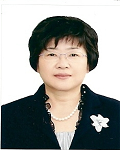
Biography:
Ho-Ran Park is currently a Dean in the Graduate School of Clinical Nursing Science at the Catholic University of Korea as well as a Professor of Nursing. She has served as a Vice President at the Korean Catholic Nurses Association since 2016. Also she served as a Vice President at the Korean Nurses Association from 2008 to 2014 and as a President at the Korean Accreditation Board of Nursing from 2010 to 2012.
Abstract:
Introduction: The study is to develop a nurse-centered doula support program (NDSP) for the management of pain in natural births and to evaluate its effect. Methods: Based on the pilot study on the labor support, textbook of DONA and ​Spinning Babies ​by Gail, NDSP selected preliminary questionnaires referring to survey on maternal needs. 60 items were derived by 5 experts and the final contents of program were confirmed with the verification of 58 items with CVI of 0.8 or more, by an expert group consisting of 2 obstetricians and 3 maternity nurses. 24 pregnant women admitted for maternity care at M hospital were included in the evaluation of NDSP efficacy. Pain, ​anxiety, postpartum hemorrhage, type of birth and the birth satisfaction of the newborn were assessed for the evaluation. The collected data was analyzed by ​χ2 test, Fisher's exact test, t-test, and repeated measures ANOVA using the SPSS 22.0 program. Results: This study showed that compared to Non-NDSP-applied group, NDSP-applied group had lower pain scores during transitional phase and lower postpartum anxiety score. Also, postpartum hemorrhage was less frequently found in NDSP-applied group, with higher birth satisfaction, when compared to the Non-NDSP-applied group. Conclusion: The ​NDSP​ developed by the present researcher is effective in reducing maternal pain, anxiety, ​postpartum hemorrhage​, and birth satisfaction in natural births, and thereby, is expected to be used as nursing intervention in maternal care. NDSP may contribute to the provision of qualitative nursing care and expansion of the role of nurses in childbirth.
Jia Guo
Central South University, China
Title: Combination of Self-Efficacy and Perceived Stress to Predict Self-Management in Youth with Type 1 Diabetes: Test of A Non-Compensatory Model

Biography:
Dr. Jia Guo is an Associate Professor at Xiangya School of Nursing Central South University. She has been working as the Principal Investigator of many international and domestic grants in diabetes management and prevention.
Abstract:
Diabetes self-management is the key to attain desired control goals. Youth with type 1 diabetes experience special self-management challenges and a great amount of stress. Little research has examined the perceived stress faced by Chinese youth with type 1 diabetes, or explored the psychosocial correlates of their self-management. The purpose of this study was to: a) to determine if self-efficacy mediates the relationship between perceived stress and diabetes self-management; and b) to explore whether perceived stress moderates the self-efficacy and diabetes self-management relationship.
Methods: Using a cross-sectional study design, the youth with type 1 diabetes were recruited from a diabetes clinic from January 2016 to December 2016 in Central South of China. Data on demographic and clinical characteristics, perceived stress, self-efficacy, and diabetes self-management were collected. Descriptive analyses and regression analyses were generated by SPSS Version 22. Structural equation modeling was implemented with the MPlus program.
Results: A total of 149 youth with a mean age of 13.9 years were investigated. There was no direct effect of perceived stress on diabetes self-management (p>0.05); however, self-efficacy mediated the relationship between perceived stress and diabetes self-management. Lower perceived stress was associated with better self-efficacy (r=-0.67; p<.01). The combination of high self-efficacy and low perceived stress shows better self-management than would be predicted from the main effects of self-efficacy and perceived stress alone.
Conclusions: Decreasing perceived stress and improving self-efficacy are important strategies to achieve optimal diabetes self-management. Ways to improve youths' self-efficacy and ability to cope with stress should be the primary goal of diabetes education for Chinese youth with type 1 diabetes to improve diabetes self-management.
May Aasebø Hauken
University of Bergen, Norway
Title: Optimizing Social Network Support for Families Living with Parental Cancer: results from a RCT study

Biography:
May Aasebø Hauken is an Associate Professor at Centre for Crisis Psychology, Faculty of Psychology, University of Bergen, Norway.
Abstract:
Background: Social support is important for health and quality of life (QOL). However, families living with parental cancer report severe lack of social support and little is known about the social networks of these families.
Aim: Thus, the aim of this study was to optimize social network support via a 3 hour structured network meeting for families living with parental cancer and their social network members.
Methods: A RCT study where 35 families living with parental cancer were randomized to either a control group or an intervention group. Data on QOL, social support and mental health were obtained from healthy parents and children via validated questionnaires.
Results: Both healthy parents and the children reported more mental distress and impaired quality of life than the norm population before the intervention. For healthy parents a significant intervention effect (p=.03) was found with main effects on received and perceived social support, suggesting an indirect effect on QOL through social support. A significant impact was also seen on parental self-efficacy (p=.021). The intervention stabilized the children’s family function, while the family function largely (d = 0.86) decreased in the control group (p=.018). Significant correlations were documented between the children’s levels of anxiety and the well parents’ received social support (r= -.196; p<.001), QOL (r= -.138; p<.05) and psychological distress (r= .166; p<.05),
Conclusions: Optimizing social network support for families living with parental cancer via a short network meeting seems to increase provided social support for the families with positive impact on both healthy parents and the children’s situation.
Esther Shalom
Wolfson Medical Center, Israel
Title: The correlation of how the head nurse perceive her changing role and her satisfaction at work

Biography:
Esther Shalom, R.N, M.A. is a Head Nurse, Internal Dept. F at Wolfson Medical Center, Israel.
Abstract:
The role of the head nurse has been important since the introduction of modern nursing in the nineteenth century. Today, the position is considered critical in the health systems and is widely recognized as one of the most burdensome roles in the health system. The head nurse is the backbone of the medical and nursing staff, determining the climate at the work environment.
Its functioning affects the satisfaction and preservation of the team. During the 1970s, there was a need for organizational and managerial change in the world of health organizations. The introduction of management models from the industrial world and business leadership to health organizations influenced, among other things, on the role of the nurse in charge of the department. The job expanded, tasks and objectives were added to it. It was found that head nurses dealt only 25% of their time with clinical tasks and 75% of their time was devoted to other obligations and duties, called "the invisible work." Work that is usually difficult to define and / or quantify. They were appointed to management positions without management skills, adequate education training and resources.
The changes in their roles have led to head nurses pointing out that their role has become complicated and dull. All of these factors increase the sense of stress in the responsible nurse and reduce her satisfaction with work.
Objective: To examine the relationship between the perception of the head nurse of her changing role and her satisfaction with the work.
Method: cross sectional study, convenience sample
Sample: 50 head nurses
Research Tool: An anonymous self-administered questionnaire that includes the following sections
- Sociodemographic
- Head nurse perception of the management skills to her job description
- Head nurse perception of its role includes:
- Overload at work
- The "Invisible work" conflict
- Support and training
- Work satisfaction
Findings:
The perception of the head nurse of her job:
- Management skills are perceived as high
- The workload is very high (average 4.35)
- They are in conflict between the clinical role and the managerial role ()
- They lack support (3.85 / 5) and training (average 3.35 / 5).
- The satisfaction of the head nurse at work is high
Conclusions:
Satisfaction of head nurses at work is high despite a sense of workload, support and training are inadequate, and although they are trapped in the conflict of the invisible work in contrary to the findings of the literature.
Recommendations:
It is recommended to improve management skills through ongoing training and support in order to reduce the conflict level of the "invisible work". It is recommended to change the status of the head nurse and as a result of the assistant.

Biography:
Biography: Galit Palacios-Klein is a R.N.and has a M.A. from the University of Tel Aviv. She worked for many years in the hospital setting and has vast experience in promotion of health in the community. At present she works as a chief manager of Nurses in a consultant clinic in the community in Clalit H.M.O. and also serves as a nursing co-ordinator on the District research committee.
Abstract:
Background: Self-efficacy (SE) is defined as the perception of ones' ability to affect life events. Patients with high SE have better disease control. Health coaching identifies the gap between desired and actual behavior and increases SE, empowering patients to make healthier choices. The Sharon-Shomron District of Clalit H.M.O, Israel, has embraced health coaching as an essential part of day-to-day care in community nursing.
Objectives:-To explore the differences between SE and lifestyle among nurses before and after participating in a health coaching workshop. -To examine whether the nurses' SE influences patients with Type 2 diabetes SE and control level.
Methods: 2-phase intervention study: (1)42 nurses participated in a health-coaching workshop and completed a pre and post questionnaire on SE and lifestyle. (2)50 Patients with uncontrolled diabetes underwent 4-6 nurse-led coaching sessions. Patient SE questionnaire and medical records prior to and 3 months post-intervention were collected.
Results: Nurses' SE increased post- workshop (2.92 vs 3.19, p<0.01) and health behaviors improved (5.97 vs 6.64, p<0.01). Nurses' personal health SE correlated with them ability to affect patients' SE and health behavior (rs=0.38, p<0.05). Patients' SE increased following intervention (5.34 vs 7.88, p<0.01), also BMI and HbA1C improved (BMI: 32.17 vs 30.56, HBA1C 9.43 vs. 7.85, p<0.01).
Conclusion: Health coaching was effective in improving nurses' health behavior and SE. Nurses' SE positively correlated with better disease control in diabetic patients. These findings should be considered regarding future training resources.
Anabela Pereira Mendes
Higher Nursing School of Lisbon, Portugal
Title: Nursing content in the process of information-sharing in ICU: A Research Protocol

Biography:
Abstract:
Critical care situations as a significant impact on the family life, so the interaction that family-members and nurses built reveals itself a dynamic and important process for both. Family members are nursing client in the intensive care unit (ICU) due to the emotional vulnerability that they experience. In the clinical interaction, family looks for information to understand the situation while nurses want to know better this family and the process health-disease transition that they are living (1,2). The aim of this research is to identify and analyse the Information Needs and the Information content Shared by nurses and family. The specific objectives are: Identify in the nurses' narrative, the contents that are present in the information transmission; and Identify in the nurses’ description, the nursing contents that are present in the data collection.
This project involves a qualitative approach; data collection will be performed with a semi-structured interview and written narratives(3). Participants are going to be selected intentionally. The research population will be the nursing team. Data will be discussed with: 1- “Nursing Interventions Classification (NIC) as a comprehensive standardized nursing terminology that has been used to systematically classify nursing care in clinical settings”,“Nursing Outcomes Classification (NOC) and standardized Nursing Diagnoses (NANDA-I) “ (4) (5); 2- Orem theory of Self-care (6); 3 -“The structure of caring” according to Swanson(7).
The expected duration of this study is two years. It will contribute to increase knowledge in nursing practice. The results could affect directly the nursing intervention and indirectly the health care and health systems.
Louie P. Hijalda
University of San Agustin, Philippines
Title: Gugma sang isa ka Iloy: The Other End of Parenting Experience by Illongga Mothers with Empty Nest Syndrome
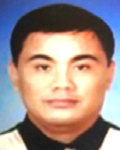
Biography:
Louie Pinuela Hijalda, Ph.D., RN, is currently a clinical instructor at the University of San Agustin, College of Health and Allied Medical Profession. A member of the Department of Science and Technology – Western Visayas Human Resource Development Committee (DOST–WVHRDC) and University of San Agustin – Research Ethics Review Committee
Abstract:
Background. Mention the term empty nest and one’s mind immediately conjures up a picture of an empty house. The mother-child relationship has now evolved into that of an adult to adult relationship. For others, they feel that change is happening more rapidly than ever before and further watching their youngest child move out of the house was difficult for mothers especially in letting go and moving on.
Methodology. Descriptive phenomenology of Husserl was used.The saturation point was based in the participant`s answer. Purposeful sampling was utilized to select participants, informed consents were discussed and in-depth face to face semi-structured interview was used. Colaizzi methodological approach was used for analysis. The anonymity and confidentiality of information was upheld.
Results. Several themes and supports emerged in relation to their experiences. Emotional support in the provision of caring, empathy and love; informational support by comparing their experiences to others and appraisal support from constant communication of information that is relevant to self-evaluation. The participant’s spirituality was also well defined and had adjusted their selves very well.
Conclusions. The empty nest syndrome gave them mixed feelings and a challenge yet Ilongga mothers’ accommodated themselves with supports and resiliency to achieved condition of wellness in letting go and moving on.
Keywords: Empty nest, mother-child relationship, support, Filipino perspective
Karin Philipp
Own Practice, Vienna, Austria
Title: Analyzes for the introduction of Psychiatric Mental Health Advanced Nursing Practice in Austria

Biography:
Karin Philipp is Nurse Assistant (Nursing home, Private Hospital) in the year 1991 and in 1997 Diploma in psychiatric Nursing (Psychiatric Hospital Vienna, 1995 - 2006), 2005 Diploma in general Nursing, 2006 University hospital Vienna, Department of Psychiatry (2006 – 2017), 2010 MSc in Psychotherapy (Danube University, opening of a part-time practice), 2016 MBA in Health Care Management (Medical University of Vienna/ University of Vienna), 2018 Health insurance practice for psychotherapy.
Abstract:
Advanced Nursing Practice (ANP) has only been discussed in Austria for about 10 years. There are isolated courses for ANP, but no legal basis. At present, APNs are working informally, the profession of Psychiatric Mental Health Advanced Practice Nurse (PMH-APN) does not exist in Austria. The demographic development and the shortage of resources required the reform of the health care system. One focus of health care reform is the nationwide expansion of primary care. Nurses should play a central role here. The high prevalence of mental disorders in the general population requires the use of specialized healthcare professionals in primary care. PMH-APNs could make a significant contribution here, as experts suggest is the optimal use of PMH-APNs in primary care workplaces, where mental health promotion, mental health prevention and mental health services are also in demand. The increasing demands, as well as the increase of autonomy and responsibility in the nursing field, make a reform of the training and an extension of the nursing skills necessary. The introduction of ANP in Austria could raise the attractiveness of the nursing profession and counteract the lack of nursing staff. After clarification of personnel requirements and framework conditions for the implementation of Psychiatric Mental Health Advanced Nursing Practice in Austria, the economic evaluation is carried out by means of environmental analysis, strengths and weaknesses analysis and opportunity-risk analysis.
Zehra GOK METIN
Hacettepe University School of Nursing, Turkey
Title: Is it possible to alleviate chronic pain with aromatherapy and massage

Biography:
Gok Metin has completed her PhD in Hacettepe University Faculty of Nursing, and conducted postdoctoral studies from University of Alabama School of Nursing. She is working an assistant professor in Medical Nursing Department of Hacettepe University Faculty of Nursing. She has published more than 20 papers in reputed journals and has been serving as an editorial board member of repute.
Abstract:
Chronic pain is clearly a major health care problem all over the world. Unfortunately, there have been concerns about the effectiveness of traditional medical interventions, suggesting the need for alternative chronic pain treatment strategies. Alternative strategies including physical therapy and rehabilitation, exercises, peripheral techniques such as aromatherapy, and massage have also been employed to manage chronic pain and improve functional status. In this abstract, the outcomes of three randomized controlled studies conducted by Gok Metin and her colleagues using aromatherapy and massage that focusing on to alleviate rhematoid arthritis pain, diabetic peripheral neuropathic pain and chemotherapy induced peripheral neuropathic are presented. The first study using aromatherapy massage three times each week for a 6-week period for both knees of patients with Rheumatoid Arthritis significantly decreased pain scores (p<.05). The aromatherapy massage essential oil was a 5% mixture consisting of Lavandula augustifolia, Juniperus communis, Cananga odorata, and Rosmarinus officinalis in the ratio 3:3:2:2 in 100 mL of coconut carrier oil in that study. The second study using aromatherapy massage three times per week for a period of 4 weeks to the feet and the hands in patients with diabetic peripheral neuropathic pain siginificantly decreased neuropathic pain scores (p<.05). Related study authors utilized an aromatherapy oil blend including rosemary, geranium, lavender, eucalyptus, and chamomile at a ratio of 1:1:1:1:1 with the coconut carrier oil in a 5% solution. As for the third study using classical massage one time per week for a period of 12 weeks to the feet and the hands in patients receiving adjuvan paklitaxel regimen significantly alleviated chemotherapy induced peripheral neuropathic pain scores (p<.05). Overall, considering the outcomes of these randomized contolled trials aromatherapy and massage can be readily integrated into clinical settings by nursing staff to alleviate chronic pain.

Biography:
Galit Palacios-Klein is a R.N. and has a M.A. from the University of Tel Aviv. She worked for many years in the hospital setting and has vast experience in promotion of health in the community. At present she works as a chief manager of Nurses in a consultant clinic in the community in Clalit H.M.O. and also serves as a nursing co-ordinator on the District research committee.
Abstract:
Background: Self-efficacy (SE) is defined as the perception of ones' ability to affect life events. Patients with high SE have better disease control. Health coaching identifies the gap between desired and actual behavior and increases SE, empowering patients to make healthier choices. The Sharon-Shomron District of Clalit H.M.O, Israel, has embraced health coaching as an essential part of day-to-day care in community nursing.
Objectives:-To explore the differences between SE and lifestyle among nurses before and after participating in a health coaching workshop. -To examine whether the nurses' SE influences patients with Type 2 diabetes SE and control level.
Methods: 2-phase intervention study: (1)42 nurses participated in a health-coaching workshop and completed a pre and post questionnaire on SE and lifestyle. (2)50 Patients with uncontrolled diabetes underwent 4-6 nurse-led coaching sessions. Patient SE questionnaire and medical records prior to and 3 months post-intervention were collected.
Results: Nurses' SE increased post- workshop (2.92 vs 3.19, p<0.01) and health behaviors improved (5.97 vs 6.64, p<0.01). Nurses' personal health SE correlated with them ability to affect patients' SE and health behavior (rs=0.38, p<0.05). Patients' SE increased following intervention (5.34 vs 7.88, p<0.01), also BMI and HbA1C improved (BMI: 32.17 vs 30.56, HBA1C 9.43 vs. 7.85, p<0.01).
Conclusion: Health coaching was effective in improving nurses' health behavior and SE. Nurses' SE positively correlated with better disease control in diabetic patients. These findings should be considered regarding future training resources.
Zeinab Hassan
Cairo University, Cairo University
Title: Knowledge level of nurses in Jordan on ventilator-associated pneumonia and preventive measures

Biography:
Dr. Zeinab Hassan is a Medical Physicist at National Cancer Institute, Cairo University, Egypt
Abstract:
BACKGROUND:
Ventilator-associated pneumonia is the most prevalent infection in Intensive Care Units, with the highest mortality rate; crude mortality rates may be as high as 20-75%. Many practices such as prevention measures (e.g. hand washing, wearing gloves, suctioning, elevated head of bed between 30° and 45°) have demonstrated an effect of reducing the incidence of this infection.
AIMS:
To identify the level of nurses' knowledge of ventilator-associated pneumonia and prevention measures before an educational programme, identify the level of nurses' knowledge on ventilator-associated pneumonia and prevention post an educational programme and identify the reasons for not applying ventilator-associated pneumonia prevention measures among nurses in Jordan.
DESIGN:
Pre- and post-intervention observational study.
METHOD:
Data based on a self-reported questionnaire from 428 nurses who worked in intensive care units were analysed. PowerPoint lectures, videos, printed materials and electronic materials were used in the intervention. Paired t-tests were used to test research questions.
RESULTS:
More than three-quarters of nurses had a low knowledge level regarding pathophysiology, risk factors and ventilator-associated pneumonia preventative measures. Nurses showed significant improvements in mean scores on the knowledge level of ventilator-associated pneumonia and prevention measures after an educational programme (p < 0.05). The main reasons for not applying prevention measures were the lack of time and no followed protocols in the units.
CONCLUSION:
Health education programmes about ventilator-associated pneumonia must be conducted among nurses in Jordan through continuous education.
RELEVANCE TO CLINICAL PRACTICE:
Hospital and nursing administrators should be actively involved in educational programmes and in assuring support for continuing education. Protocol for ventilator-associated pneumonia prevention should be developed based on current evidence-based guidelines.
Christel Sierra S. Santos
Saint Louis University, Philippines
Title: Cross cultural perspectives of suicide in adolescents and young adults among the South Koreans, Indians and Filipinos
Biography:
-
Abstract:
RATIONALE: Despite high suicide occurrences in Asia, studies are limited.
OBJECTIVES: This study determined beliefs among South Koreans, Indians, and Filipinos about suicide among youth, their cultural practices, promotive and preventive measures, and suicide response.
METHODS: Focused Ethnography was employed. South Koreans (SK), Indians (IN), Filipino Cordillerans (FC), Ilocanos (FI) and Muslims (FM) were selected using purposive referral sampling guided by saturation. Semi-structured interviews and documentary analysis was done.
FINDINGS: Meaning of suicide across cultures is forbidden. In India, it’s a crime and among FM, vices are considered a form of suicide.
Relationship problems are common. FM identified Eeman, Ilocanos added embarrassments; FC had influence by dead relative. Indians identified financial difficulties, depression and unmet expectations. SK identified academic pressure, celebrity influence, unemployment, and bullying. Preventive and promotive practices, counselling is common across cultures. FM added stronger belief FC perform Pejed while IN and SK have information campaigns.
Responses after attempted suicide varies; FM encourages repentance; FC perform Tawal, counselling, resentment and bullying; IN took legal actions while SK blames or employs manifest shock. FM are non-judgemental, prayers may or may not be done, burial within 24 hours; which is similar to FC, Kanyaw, and anger; FI perform dung-aw, atang, they put live chick over the coffin and cannot sleep facing it; IN observe anti-dowry law, cremation before sunrise and manifest family trauma; SK offer Chrysanthemum.
CONCLUSIONS: Beliefs and practices on suicide among youth are influenced by their reverence to gods, power of supernatural, social, financial, mental and emotional factors.
RECOMMENDATIONS: Health professionals may use findings as cultural understanding of suicide among studied cultures, thus improving sensitivity and competent care. Governments and other groups can consolidate information when evaluating mental health programs. Studies may be done but with different cultures to provide a more comprehensive understanding of suicide among youth.
Louie P. Hijalda
University of San Agustin, Philippines
Title: Experiences and Health Related Quality of Life among Women with Systemic Lupus Erythematosus in Iloilo Province
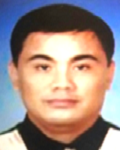
Biography:
Louie Pinuela Hijalda, Ph.D., RN, is currently a clinical instructor at the University of San Agustin, College of Health and Allied Medical Profession. A member of the Department of Science and Technology – Western Visayas Human Resource Development Committee (DOST–WVHRDC) and University of San Agustin–Research Ethics Review Committee
Abstract:
Background: Globally, the Lupus Foundation in America estimates that 1.5 million Americans and at least 5 million people worldwide suffer from SLE. In the Philippines, there is an estimated 443,891 among the population and the increasing number identified is getting more serious and is difficult to deal with.
Methodology: A descriptive phenomenology, qualitative research, with six participants involved. The guide questions were divided into four aspects: physical, psychological, social and spiritual lived experiences and health related quality of life. The rigor and validity of the study was achieved through engagement with the data, verification with feedback, use of extracts from verbatim account and peer debriefing. The data analysis involved the use of Colaizzi methodological approach.
Results: Main themes surfaced as similar among participants in their journey towards independence, acceptance, family support and faith and trust to God. At first, they really had a hard time accepting their disease condition but later on, they come to adapt to its changes and keep moving forward and learned lessons from it. They spend their time thinking about how to live their life normally. Medications and therapies were essential parts and the prolonged compliance to medications entailed side effects which the client cope up.
Conclusion: Participants made strategies on how to control, ease or relieve the suffering brought about by their physical, psychological, social and spiritual distress. Their faith, hope and trust in God even strengthened after knowing the disease.
Keywords: Systemic lupus erythematosus, health related quality of life, Iloilo province

Biography:
Agron Bytyqi, has his experience in nursing teaching and research for more than 10 years. He is coordinator of Continuing Center of Professional Education at General Hospital of Prizren. Member of steering council of Kosovo Nursing Chamber. General secretary of Professional Health Association (PHA) in Kosovo where he worked in many projects related to pain management issues, like courses, researches and events. And he is chief of board at Patients’ Rights Association in Kosovo (PRAK).
Abstract:
Satisfaction at work is defined as all the feelings that an individual has about his/her performance. Job satisfaction is important in predicting stable systems, reducing turnover and motivate employees.
The aim of the study was to determine the factors that influence job satisfaction among nurses at Regional Hospital of Prizren. There was used quantitative approach, and statistical analysis was made of data from assessments, opinions and attitudes of participants provided by questionnaires. The target group of nurses were random from different departments, with different work experience.
It was used a structured questionnaire to collect data from participants, the questionnaire was anonymous and participation was voluntary. 215 questionnaires were distributed and returned completed a total of 204 questionnaire (response rate 94.9%).
Participants reported low satisfaction with not being involved in political decision making, with salaries, lack of resources, promotion, reward for a well done job, doing a lot of non-clinical tasks and not having sufficient time with patients. This study shows that participants were dissatisfied with their job, while 29% of them had the feeling that every day are used emotionally from work, and 14% of participants felt consumed by their work. Results also showed that participants were satisfied in relationships with co-workers and the level of patient care. Nearly half of respondents (40%) have experienced disappointment or frustration at work as a result of limited resources.
Recommendations: Organizing frequent meetings with management staff and employees, for the purpose of identifying and resolving problems or gaps in their best way possible (through meaningful communication); Improvement or redesign the responsibilities of workers and recognition of their achievements or personal results; Improvement of conditions at work place, like work environment, equipment, sound, light, color, temperature, space with Internet access to read etc.; Providing opportunities for modified/flexible shift patterns are possible to all professionals; Promotion, reward for one or some well-done job, promotions, are also shown effective and motivated for improvement of health professionals job satisfaction.
Keywords: nurses, satisfaction, hospital
Henok Mulugeta
Debre Markos University, Ethiopia
Title: The prevalence of depression among diabetic patients in Ethiopia: A Systematic review and Meta-Analysis, 2018

Biography:
Henok Mulugeta is a Lecturer of Nursing, Department of Nursing, College of Health Science Debre Markos University, Ethiopia
Abstract:
Background: Diabetes Mellitus is a chronic metabolic disorder characterized by hyperglycemia.
Depression is one of the major important public health problem that often co-morbid with diabetes. Despite of the huge effect of co-morbid depression and diabetes, the overall pooled prevalence of depression among diabetic patient in the country level remain unknown. Therefore, the objective of this systematic review and meta-analysis is to estimate the pooled prevalence of depression among patients with diabetes mellitus in Ethiopia.
Method: Data extraction was designed in accordance with the Preferred Reporting Items for Systematic reviews and Meta-Analyses (PRISMA) guidelines. Studies were accessed through electronic web-based search from PubMed, Cochrane Library, Google Scholar, Embase and PsycINFO. All statistical analyses were done using STATA version 11 software using random effects model. The pooled prevalence was presented in forest plots.
Results: A total of 9 studies with 2944 participants included in this meta-analysis and the overall pooled estimated prevalence of depression among diabetic patients in Ethiopia was 39.73 % (95% CI (28.02%, 51.45%)). According to subgroup analysis the estimated prevalence of depression in Addis Ababa was 52.9% (95% CI: 36.93%, 68.88%) and in Oromia region was 45.49% (95% CI: 41.94,49.03%).
Conclusion: The analysis revealed that the overall prevalence of co morbid depression among diabetic patients in Ethiopia was high. Therefore, ministry of health should design multi- sectorial approach and context specific interventions that address this co-morbid depression in this specific group as well as general population.
Keywords: Diabetes, Depression, Co-morbidity, Ethiopia
Louie P. Hijalda
University of San Agustin, Philippines
Title: Experiences and Spiritual Care Perspectives of Nurses Handling Clients with Alzheimers’ Disease in an Institutionalized House of Older Persons in Iloilo City
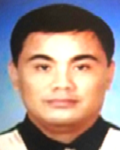
Biography:
Louie Pinuela Hijalda, Ph.D., RN, is currently a clinical instructor at the University of San Agustin, College of Health and Allied Medical Profession. A member of the Department of Science and Technology – Western Visayas Human Resource Development Committee (DOST–WVHRDC) and University of San Agustin–Research Ethics Review Committee
Abstract:
Background: Nurses are challenged to meet the dynamic needs of older persons especially with health related disorder such as Alzheimer’s disease.
Methodology: A descriptive phenomenological qualitative research with six participants involved. Privacy and confidentiality were considered. The rigor and validity of the study was based on Lincoln and Guba. Bracketing was utilized to ensure that rigor is not compromised due to researcher bias. The Colaizzi methodological approach was selected to investigate the phenomena of interest.
Results: Most of the nurses were worn out physically yet were happy and contented because of the communication and teamwork. Dementia caring practices needs to be taught properly among nurses. Patience is very important however they involve less the older persons in praying and in religious activities. Spiritual care is also given less attention in relation to religious differences and beliefs.
Conclusion: Caring for older persons with Alzheimer’s disease is a demanding field for it requires compassion, understanding, patience, and love of work. The nurses need to widen their experiences regarding dementia care and spiritual care perspectives to allow them to render the kind of care that is suitable to the needs of their individual clients. The spiritual care perspective should be explored deeper and to review the relevance of transcultural nursing paradigm in dealing with clients.
Keywords: Spiritual care perspectives, Alzheimer’s disease, House of older persons
Sangina Rai
Purbanchal University, Nepal
Title: Perception and Attitude of undergraduate nurses in research writing in Nepal
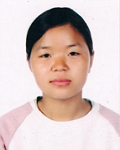
Biography:
Sangina Rai has completed her Bachelor degree in Nursing at the age of 21 form Norvic Institute of Nursing Education, Purbanchal University, Nepal in the year 2018.She is very enthusiastic girl her love for writing and reading is admirable. Her recent research ‘Perception and Attitude of undergraduate nurses in research writing in Nepal’ was selected for poster presentation in “Fifth National Summit of the Health and Population Scientists in Nepal” is being organized by the Nepal Health Research Council (NHRC) with the theme “Research for Equity and Development in the Federal Context”.
Abstract:
Background: Research is an extremely crucial element in the advancement and improvement of health care services provided to the public.
Methods: A quantitative descriptive cross-sectional research design was used for the study which was conducted among 127 undergraduate nurses who are studying in Bachelor of science in nursing third year and Post basic bachelor 2nd year at Norvic Institute of Nursing Education and Baidhya and Banskota (B&B) Medical Institute Kathmandu and Lalitpur respectively. Participants were selected through enumerating sampling technique.The non-probability convenience sampling method was used. Semi-structured questionnaire was used to collect data. Data was entered and analyzed by using descriptive statistics SPPSS vesion21 in the form of frequency and percentage.
Findings: Almost all 98.9% of participants believed that research is important in nursing, the vast majority 90.5% of participants considered nursing research is good choice for career development. About 88.4% of participants perceived research as important criteria after graduation. Findings also showed that all participants had positive attitude towards research writing. Likewise, about 86.6% of participants had positive perception whereas 13.4% of participants had negative perception towards research writing.
Conclusion: Although all 86.6% of participants had positive attitude towards research writing, still 13% had negative perception. There is urgent need to raise awareness among nursing students about importance of research in nursing to improve quality of patient care and also for personal and professional development and recognize them in scientific community as well.
Yacob Mathai
Marma Heatth Centre, India
Title: Why W neurons decreases and C neurons increases in fever?

Biography:
A practicing physician in the field of healthcare in the state of Kerala in India for the last 30 years and very much interested in basic research. My interest is spread across the fever , inflammation and back pain,. I am a writer. I already printed and published nine books in these subjects. I wrote hundreds of articles in various magazines.
After scientific studies we have developed 8000 affirmative cross checking questions. It can explain all queries related with fever
Abstract:
As you aware, if temperature increases (Absence of fever)after 31 degree Celsius, Warm sensitive neurons increase their firing rate and inhibit Cold sensitive neurons as core temperature increases. As temperature drops, the firing rate of Warm sensitive neurons decreases, reducing their inhibition, and Cold sensitive neurons which respond by increasing their firing rates.
On the contrary to increase of temperature, in fever the firing rate of Warm sensitive neurons decreases, the firing rate of Cold sensitive neurons increases as core temperature increases. inhibit warm sensitive neurons. The temperature increasing and decreasing controlled by the brain. The firing rate of Warm sensitive neurons and Cold sensitive neurons also controlled by the brain.
When the disease becomes threat to life or organs, blood circulation decreases. Temperature of fever will emerges to increase prevailing essential blood circulation.
WBC and their products stimulate the brain to increase temperature by increasing the firing rate of Cold sensitive neurons and decreasing the firing rate of Warm sensitive neurons. And it acts as a protective covering of the body to sustain life.
There is no way other than this for a sensible and discreet brain to increase temperature.
If the aim of Cold sensitive neurons increasing their firing rates in hypothermia is to increase temperature, then the aim of Cold sensitive neurons increasing their firing rates during fever is also to increase temperature.
How can we prove that W neurons decreases and C neurons increases in fever to protect the life or organ?
If we ask any type of question related to fever by assuming that the Warm sensitive neurons decreases and Cold neurons increases in fever to protect the life or organ we will get a clear answer. If avoid or evade from this definition we will never get proper answer to even a single question
If we do any type of treatment by assuming that the Warm sensitive neurons decreases and Cold neurons increases in fever to protect the life or organ , the body will accept, at the same time body will resist whatever treatment to decrease temperature and blood circulation.
No further evidence is required to prove The Warm sensitive neurons decreases and Cold neurons increases in fever to protect the life or organ.
Obalase, Stephen Babatunde
University Health Centre, Nigeria
Title: Cervical cancer screening as a correlates for tackling maternal morbidity and mortality in Ondo North Senatorial District, Ondo State, Nigeria

Biography:
OBALASE, STEPHEN BABATUNDE had his general Nursing certificate and post basic Psychiatric Mental Health Nursing Certificate at Ondo State School of Nursing, Akure and Federal School of Psychiatric School of Post Basic Nursing, Uselu, Benin City, Edo State where he was bagged RN and RPN in 1996 and 2007 respectively. He proceeded to University of Nigeria, Nsukka, Enugu State to study Health Education at first and graduated with second class upper division in 2001 and proceeded further for his second degrees at the same university where he graduated and bagged Master Degree in Public Health Education with PhD Grade IN 2012. He proceeded to Ekiti State University, Ado Ekiti, Ekiti State, Nigeria for his doctorate degree in 2015 in Public Health Education .He was gainfully employed by Ondo State Hospitals Management Board, Akure between 1999 and 2009 as Nursing Officer duly registered by Nursing and Midwifery Council of Nigeria until his present appointment with Federal University of Technology, Akure, Ondo State, Nigeria since 2009 till date where he has continued his research. Presently his research interest is on cancer especially cervical cancer where he dwelt in his PhD theses.
Abstract:
In developing nations like Nigeria where the levels of illiteracy ,poverty and poor access to quality health care are high the health problems that were thought to have been conquered are still surfacing along side with other global health problems like cervical cancer, HIV/AIDS ,Lassa fever, Ebola, severe acute respiratory syndrome (SARS) and tuberculosis .Most of the conditions that cause morbidity and mortality among Nigerian populace are preventable and that is why serious consideration must be placed on regular screening and periodic medical routine examination. Cervical cancer is primarily caused by human papillomavirus (HPV) and its relationship to cervical cancer has led to new tools for primary prevention with HPV vaccines and new screening strategies that give clinicians options for every resource setting. The ability to substantially reduce the more than one half million women per year that are diagnosed with cervical cancer and more importantly the ability to reduce the quarter of a million women per year that die of the disease particularly in under resourced areas of developing countries like Nigeria and the study area in Ondo state, The researcher generated four research questions and formulated four research hypotheses of match to match were formulated and tested at 0.05 level of significance. The sample for the study were 1800 respondents attending maternal and child clinic in all the government owed health institution in the six local government areas of Ondo North Senatorial district of Ondo State. Cross sectional research survey of descriptive type was used. The instrument for the study was self structured questionnaire .The face and content validity of the instrument was established and found to be 0.76 while the reliability coefficient of 0.79 was obtained using test retest method. The four null hypotheses were rejected which showed that there is positive correlation between maternal morbidity and mortality and cervical cancer screening, parity and sexually transmitted diseases. The following recommendations were made among other things: there should be regular screening for cervical cancer among women of reproductive age, the number of times a woman should carry pregnancy should be reduced to lowest minimal and family planning services should be promoted, any patient infected with sexually transmitted diseases should be thoroughly treated and investigated to enhance quality reproductive health care services.
Yacob Mathai
Marma Heatth Centre, India
Title: The pyrexia temperature never damage the cells of brain or harm the body

Biography:
A practicing physician in the field of healthcare in the state of Kerala in India for the last 30 years and very much interested in basic research. My interest is spread across the fever , inflammation and back pain,. I am a writer. I already printed and published nine books in these subjects. I wrote hundreds of articles in various magazines.
After scientific studies we have developed 8000 affirmative cross checking questions. It can explain all queries related with fever
Abstract:
ll treatments for fever are based on the belief that fits is the result of 41 degree Celsius temperature and it damages cells of brain and body. At the same time there is no evidence based tests or concrete diagnosing methods to the belief that fits and brain damage is the result of pyrexia [1].
Necessary ingredients to destroy brain cells and fits cannot be seen in fever.In pyrexia or absence of fever a fainted patient fell on the floor with unconscious state and destroy cells of brain, and necessary ingredients to become conscious are same.
When disease increases essential blood circulation and energy level also decreases. The vertical height between heart and brain is more than one feet. When the disease becomes severe, ability to pump the blood to the brain decreases. As a result of this brain cells are damaged. so the patient might be paralyzed or may even die.
In pyrexia or absence of fever, when blood flow to the brain decreases and fits are formed. There is no other way than this to increase blood circulation to the brain.It is a sensible and discreet action of brain to protect the life or organ.
Recovery from Fits.
The patient become conscious before the time to get decreasing the temperature of fever. When the fainted patient lie on the floor, the vertical height between heart and brain is decreased, blood circulation increased to brain.
Self checking methods.
When the fainted patient lie on the floor,The patient can stand straight and lie on bed alternatively.Then the patient can experience himself the intensity of blood circulation.T he patient can experience when he stand his blood circulation decreases and when lie on the bed the blood circulation decreases.Besides that he can also experience increased blood circulation when lie on the bed raise the foot higher than head.
Razieh Froutan
Mashhad University of Medical Sciences
Title: Challenges faced by nurses in using pain assessment scale in patients unable to communicate: a qualitative study

Biography:
Razieh Froutan has completed her PhD at the age of 48 years from University of Social Welfare and Rehabilitation Science . she is Assistant Professor in Nursing Management School of Nursing and Midwifery Mashhad University of Medical Sciences. She has published more than 15 papers in reputed journals and has been serving as an editorial board member of repute.
Abstract:
One helpful strategy adopted for pain management in non-verbal, intubated patients is the use of a proper pain assessment scale. The purpose of the present study is to achieve a better and deeper understanding of the existing nurses’ challenges in using pain assessment scales among patients unable to communicate. This qualitative study was conducted using content analysis. Purposive sampling was used to select the participants and continued until data saturation. The participants included 20 nurses working in intensive care units. Data was collected using semi-structured interviews and analysis was done using an inductive approach. Four categories and ten sub-categories were extracted from the experiences of the nurses working in the intensive care units in terms of nursing challenges in using non-verbal pain assessment scales. The four categories included “forgotten priority”, “organizational barriers”, “attitudinal barriers”, and “barriers to knowledge”. The findings of the present study have shown that various factors might influence on the use of nonverbal pain assessment scales in patients unable to communicate. Identifying these challenges for nurses can help take effective steps such as empowering nurses in the use of non-verbal pain assessment scales, relieving pain, and improving the quality of care services.
- Poster Presentations
- Day 2 of the scientific program will be updated soon
